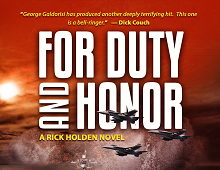
Best-selling writer Marilynne Robinson offers tips to aspiring, emerging and established writers. In a wide-ranging interview, New York Times Magazine writer Wyatt Mason encourage Robinson to share some of her secrets. Some of her advice was targeted specifically at writers, while some had more universal appeal. For example:
“There was a very strong tendency among people to be kind of isolated,” she said. “More hermits per capita than you’d find in most places. We were positively encouraged to create for ourselves minds we would want to live with. I had teachers articulate that to me: ‘You have to live with your mind your whole life.’ You build your mind, so make it into something you want to live with. Nobody has ever said anything more valuable to me.”
Here is more from Mason: This June, as a grandfather clock rang the quarter-hour in her modest Iowa City living room, the American novelist and essayist Marilynne Robinson, a woman of 70 who speaks in sentences that accumulate into polished paragraphs, made a confession: “I hate to say it, but I think a default posture of human beings is fear.” Perched on the edge of a sofa, hands loosely clasped, Robinson leaned forward as if breaking bad news to a gentle heart. “What it comes down to — and I think this has become prominent in our culture recently — is that fear is an excuse: ‘I would like to have done something, but of course I couldn’t.’ Fear is so opportunistic that people can call on it under the slightest provocations: ‘He looked at me funny.’ ”
Read more here

The sea has inspired innumerable writers. Many of them have spent time at sea – while others have not. What happens when you take a well-known writer and provide him with total immersion at sea – in this case, the U.S. Navy’s newest super-carrier, USS George H. W. Bush? You learn a great deal about writing, about the sea, and about the U.S. Navy.
The British author Geoff Dyer is known for being a genre bender — a writer of novels that sometimes read like nonfiction, and nonfiction that occasionally feels invented — and for being what he calls a gate crasher: someone who writes about whatever happens to interest him at the moment. His newest book, “Another Great Day at Sea: Life Aboard the USS George H. W. Bush,” recounts two weeks he spent embedded on an American aircraft carrier, a life for which he was almost comically ill-suited.
To begin with, Mr. Dyer is a beanpole of a man: tall, skinny, unable to walk around below deck except by stooping. He is also, by his own account, a slacker, a whiner, an eater so fussy he couldn’t abide mess hall food, a hater of anything having to do with engines or oil, and someone so bad at sharing that he insisted the Navy give him a private cabin, an almost unheard-of luxury aboard an aircraft carrier. And yet his account of his stay on the ship is mostly blissful, filled with curiosity and with admiration for the crew and the dangerous, difficult work it does: repairing airplanes, flinging them up into the sky and then snagging them when they come back down again.
Read more here

“Beyond the First Draft” is a collection of essays about writing. Because they are about writing, they’re also about reading. For John Casey, as I would judge for most good writers, it’s difficult to separate the two activities. One feeds into the other, and the process is repeated in reverse. No doubt there are exceptions, because there is scarcely a rule to which there aren’t, but it is rare to find a writer who wasn’t first, and for a long part of his life, a devoted and compulsive reader, though not necessarily a discriminating one.
Eventually some writers may get beyond reading, but if they do so, it usually means that they are beyond writing too. The narrator of Somerset Maugham’s novel “Cakes and Ale” visits the home of celebrated novelist Edward Driffield, whom he had known in the author’s less reputable youth. There is a library with books neatly and tastefully arranged by the novelist’s second wife, but, on seeing a pile of magazines, the narrator remarks wryly that if Driffield now read anything it was probably only “the Gardeners’ Chronicle.”
Read more here

Writing isn’t easy. You have to give it your all – but you have to be OK if you fail. In fact, there is a day dedicated to writing failure. July 8 is Fitz-Greene Halleck Day, a chance to remember the most intensely forgotten writer in American history. “No name in the American poetical world is more firmly established than that of Fitz-Greene Halleck,” Edgar Allan Poe wrote in 1843. And yet, despite a Central Park statue that still stands in his honor, Fitz-Greene Halleck may now be the most famous man ever to achieve total obscurity.
Failure is big right now — a subject of commencement speeches and business conferences like FailCon, at which triumphant entrepreneurs detail all their ideas that went bust. But businessmen are only amateurs at failure, just getting used to the notion. Writers are the real professionals.
Three hundred thousand books are published in the United States every year. A few hundred, at most, could be called financial or creative successes. The majority of books by successful writers are failures. The majority of writers are failures. And then there are the would-be writers, those who have failed to be writers in the first place, a category which, if you believe what people tell you at parties, constitutes the bulk of the species.
For every Shakespeare who retired to the country and to permanent fame, there are a thousand who took hard breaks and vanished: George Chapman, the first translator of Homer, begging in the streets because his patrons kept dying on him; Thomas Dekker, whose hair went white in debtors’ prison; and my favorite, the playwright John Webster, whose birth and death dates in the Dictionary of Literary Biography have question marks, symbolic hooks into oblivion.
Read more here

Can good – or even effective – writing be taught? Or is it a gift only the lucky few possess? In this Bookends piece, the New York Times asked well-known writers Rivka Galchen and Zoe Heller what they thought. A few points:
From Rivka
I wonder if we can really teach someone to be a biologist. I mean, sure, we can say, This is what a cell is, and here’s this thing called RNA, and here’s this thing called DNA, and here’s this technique called agarose gel electrophoresis that will separate your DNA and RNA fragments by size — but will teaching really produce the next Charles Darwin or Rachel Carson or Francis Crick? A real scientist follows her own visionary gleam. Penicillin was discovered when Alexander Fleming returned to his messy lab after a long vacation and made sense of a moldy petri dish most people would have thrown out as contaminated. The structure of the benzene ring came to the chemist Friedrich August Kekule after a daydream about a snake biting its own tail. You can’t teach that kind of dreaming.
From Zoe
The other night I took a look at my daughter’s English essay and suggested that she try excising the words “extremely,” “totally” and “incredibly” wherever they appeared in her prose. She did this and was surprised to discover that not only were the intensifiers superfluous, but that her sentences were stronger without them.
The question of whether writing can be taught is often framed as a “great” or “perennial” debate, when in fact it is neither. No one seriously disputes that good writing has certain demonstrable rules, principles and techniques. (All writers, insofar as they are readers, have been “taught” by the example of other writers.) What passes for controversy on this issue turns out, in most cases, to be some smaller and more specific disagreement — usually having to do with the efficacy of creative writing courses and whether they foster false hope in students without literary promise.
Read the entire article here.

With the explosion of e-publishing and the need for writers to help promote their own work, all writers – first-timers and best-selling pros face the ongoing dilemma of promoting their work without being shrill about it. But much self-promotion on social media seems less about utility and effective advertising and more about ego sustenance. How do you avoid this pitfall?
In April, Rebecca Makkai, a fiction writer, published a satirical piece on the blog for the literary magazine Ploughshares titled “Writers You Want to Punch in the Face(book).” In it, she depicted the Facebook posts of a fictional writer, Todd Manly-Krauss, who is “the world’s most irritating writer.” Teddy Wayne offers some useful tips for all of us in his “Of Myself I Sing” NYT piece.
Read more here:
http://www.nytimes.com/2014/08/24/fashion/of-myself-i-sing.html?module=Search&mabReward=relbias%3Aw%2C%7B%221%22%3A%22RI%3A5%22%7D&_r=0

Writers looking for help? Evan Williams to the Rescue!
Evan Williams is at it again. Mr. Williams is sitting in an office here a mile up the road from Twitter, where he is a founder and is still a board member, working on Medium, an amorphous-sounding company that could be one more curio of the Internet age or might end up taking over the world.
So in 2012, he started Medium, a place where stories are made and read. It’s a blogging platform, and anyone can contribute, with writing on all manner of topics. The posts that gain attention, often on Twitter, are displayed prominently and gain more traction as readers and contributors weigh in. The design is responsive, meaning that no matter what you are reading on — phone, tablet or computer — it always looks pretty.
Read more here

There are likely as many “beginning writers” as there are established writers. A few beginning writers hit pay dirt the first time. Many, many others struggle for a protracted time.
In this New York Times “Bookends” piece, two established writers, Anna Holmes and Leslie Johnson answer the important question: “When you started out, was there anything you used to do as a writer you now regret?” Just to whet your appetite:
Anna:
I regret many things, including, but not limited to:
-
Inserting myself into reported narratives where I didn’t belong.
-
Crafting long, complex sentences that I thought made me sound intelligent and sophisticated.
-
Assuming that aggressive, masculine-sounding prose was the ideal style of writing because it was so frequently rewarded in my literature and composition classes.
-
Taking too long to get to the point.
Leslie
When I started writing autobiographical nonfiction, I was mainly using these early slivers of memoir to purge all kinds of guilt and self-loathing and shame. I was writing almost exclusively about the parts of myself I liked least — or the situations I most regretted. These were the aspects of my life that carried the most urgency, and I was convinced that confessing them was the only way to achieve a sense of authenticity — to escape the trap of self-aggrandizement. They were the ragged edges, the loose threads. I wanted to follow them. I felt an urge to articulate every notion or impulse I’d ever had. I thought this would earn my readers’ trust. I wouldn’t make myself look good, and — in this refusal — I would make myself look honest. But it usually turned out more like this: I just made myself utterly unlikable.
Read more here

Here is a question aspiring writers sometimes ask themselves: Who owns the story, the person who lives it or the person who writes it? In her piece, “The Right to Write,” Roxanna Robinson sheds some light on why we write:
Writers are trying to reach some understanding of the world, and we do this by setting down stories. We draw on our own experience, but, since that includes everything we encounter, this means drawing on others’ stories as well. Shakespeare didn’t limit himself to writing about the life of an uneducated actor from Stratford-on-Avon. He felt he had the right to write about anyone – kings, queens, fools, servants, any age and any gender, any background, any race. Many of his stories came from other sources, but he imagined the lives and the minds of these characters so completely that he earned the right to tell their stories.
A writer is like a tuning fork: We respond when we’re struck by something. The thing is to pay attention, to be ready for radical empathy. If we empty ourselves of ourselves we’ll be able to vibrate in synchrony with something deep and powerful. If we’re lucky we’ll transmit a strong pure note, one that isn’t ours, but which passes through us. If we’re lucky, it will be a note that reverberates and expands, one that other people will hear and understand.
Read more here

Most writers have a short “pantheon” of well-known writers who they admire. And more often than not, new writers tend to write the kind of books their “heroes” write. They may branch out later, but they typically begin by “writing what they read.”
In this short “Bookends” piece, successful writers Zoe Heller and Daniel Mendelsohn share their favorite writers – with a twist. The subtitle of the piece is: “Whose writing career do you most envy?”
Read more here






